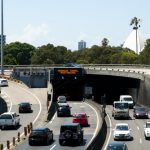Road Fatalities on the Rise Despite COVID Lockdowns

Despite Covid lockdowns right across the country for large chunks of last year and the year before, road fatalities are on the rise.
The pressure is now on governments at both the state and federal level to reassess road safety strategies, if they have any hope of approaching the target of zero road deaths by 2050.
Better road safety planning is needed
National motoring bodies, road trauma organisations and expert health practitioners are calling on Infrastructure and Transport Minister, Barnaby Joyce, to rethink the current ten-year road safety strategy.
One of the biggest issues, they say, is an uncoordinated approach to collecting road fatality data, which in some cases lags by as much as four years.
The inefficiency of date collection hampers efforts to properly inform road safety measures, making it difficult to identify the areas most in need of reform, or to measure the effectiveness of measures that are in place.
The groups also believe that the way data has been collected in real time during Covid shows that it can be done – a framework that simply needs to be designed and implemented.
Road fatalities on the rise
According to available statistics, 1,126 people died on Australia’s roads in the past 12 months, a 1.4 per cent increase on the year before, despite the fact that roads were nearly empty over a long period of time.
Since 2010, the road toll has fallen but motorcyclist deaths have remained constant, while cyclist deaths have risen.
It’s estimated that about 100 people are hospitalised each day as a result of road accidents, costing the country $30 billion each year.
The biggest killers tend to be alcohol and drug use, fatigue and driver distraction, and motorists are being urged to take it easy over the upcoming holiday period.
Drink and drug driving
Changes were made to New South Wales laws this year, including the enactment of a new offence with harsher penalties if a driver is detected with an illegal blood alcohol level along with illicit drugs in their system.
As with standalone offences for drink driving and drug driving, the penalties range depending upon:
- The type of license you hold,
- How much of the drug or alcohol was present in your system, and
- Whether or not this is your first major traffic offence within the past 5 years.
Fatigue – the silent killer
Fatigue-related crashes are almost three times as likely to be fatal than crashes not involving fatigue because drivers who are asleep can’t brake, or get their vehicle out of the way.
While there is no stand-alone offence for driving fatigued for general motorists in New South Wales, there are legislated offences Under the Heavy Vehicle National Laws which are enforced Australia-wide for truck drivers and drivers of ‘heavy vehicles’ over 4.5 tonnes gross vehicle mass.
(1) A person must not drive a fatigue-regulated heavy vehicle on a road while the person is impaired by fatigue. The maximum penalty–$6000.
What are the penalties for driving when you’re tired?
However, general motorists can be charged with other driving offences if they are found to be fatigued.
In 2017 a Sydney Uber driver was charged with negligent driving occasioning death after a road accident which killed a passenger exiting his vehicle.
At the time, Police alleged the driver had worked 21 hours straight. Research shows that driving for 17 hours straight, without a break has a similar effect on your brain and body as a blood alcohol level (BAC) of 0.05.
Negligent driving occasioning death, if it is a first major traffic offence within the previous 5-year period, carries a maximum penalty of 18 months in prison, a 3-year disqualification period from driving and a $3,300 fine.
If it is a subsequent offence, then the maximum penalty is 2 years in prison, 5 years’ disqualification and a $5,500 fine.
Negligent driving causing grievous bodily harm
For a first offence, the maximum penalty is a 9-month prison term and a $2,200 fine and a 12-month disqualification from driving.
For a second offence, the maximum penalty is a 12-month prison term and a $3,200 fine and disqualification from driving for 2 years.
Reckless driving
For a first offence, the maximum penalty is a 9-month prison term and a $2,200 fine and a 12-month disqualification from driving.
For a second offence, the maximum penalty is a 12-month prison term and a $3,200 fine and disqualification from driving for 2 years.
Driver distraction
Driver distraction most often relates to the use of mobile phones or other devices while driving and the laws with regard to this can be confusing.
Drivers are not permitted to use mobile phones at all while driving unless they are securely mounted or operate through the car stereo via Bluetooth and are totally ‘hands free’.
The only time a driver can handle a mobile phone while driving is to hand it to a passenger.
The laws around the use of ipods for music streaming, sat navs, CB radios and other devices such as ipads and tablets are more complex.
However, the New South Wales Road Rules regulation 297 states that ‘a driver must not drive a vehicle unless the driver has proper control of the vehicle’, and the driver must have a ‘clear view of the road, and traffic, ahead, behind and to each side of the driver’.
Over the past few years, the NSW Government has invested heavily in a network of high-tech cameras, capable of detecting illegal mobile phone use and other driver distractions, activity from as far as a kilometre away, even at night, and in bad weather conditions.
To avoid being fined this holiday period, or worse, a road accident, drivers should ensure that they are familiar with speed limits, not tired and clear headed, not driving under the influence of drugs or alcohol, and that phones are only used when necessary, and within the law.
Going to court for a traffic offence?
If you are going to court for a traffic offence, call or email Sydney Criminal Lawyers anytime to arrange a free first consultation with an experienced, specialist traffic lawyer who will accurately advise you of your options, the best way forward, and fight for the optimal outcome in your specific situation.
Receive all of our articles weekly
Related Articles
RELATED LEGISLATION
- Section 110 Road Transport Act 2013 | Driving with the Presence of a Prescribed Concentration of Alcohol in Person's Breath or Blood
- Section 111 Road Transport Act 2013 | Drug Driving - Driving with Presence of Certain Drugs (Other than Alcohol) in Oral Fluid, Blood or Urine
- Section 112 Road Transport Act 2013 | Use or Attempted Use of a Vehicle Under the Influence of Alcohol or Any Other Drug
- Section 117 Road Transport Act 2013 | Negligent, Furious or Reckless Driving







